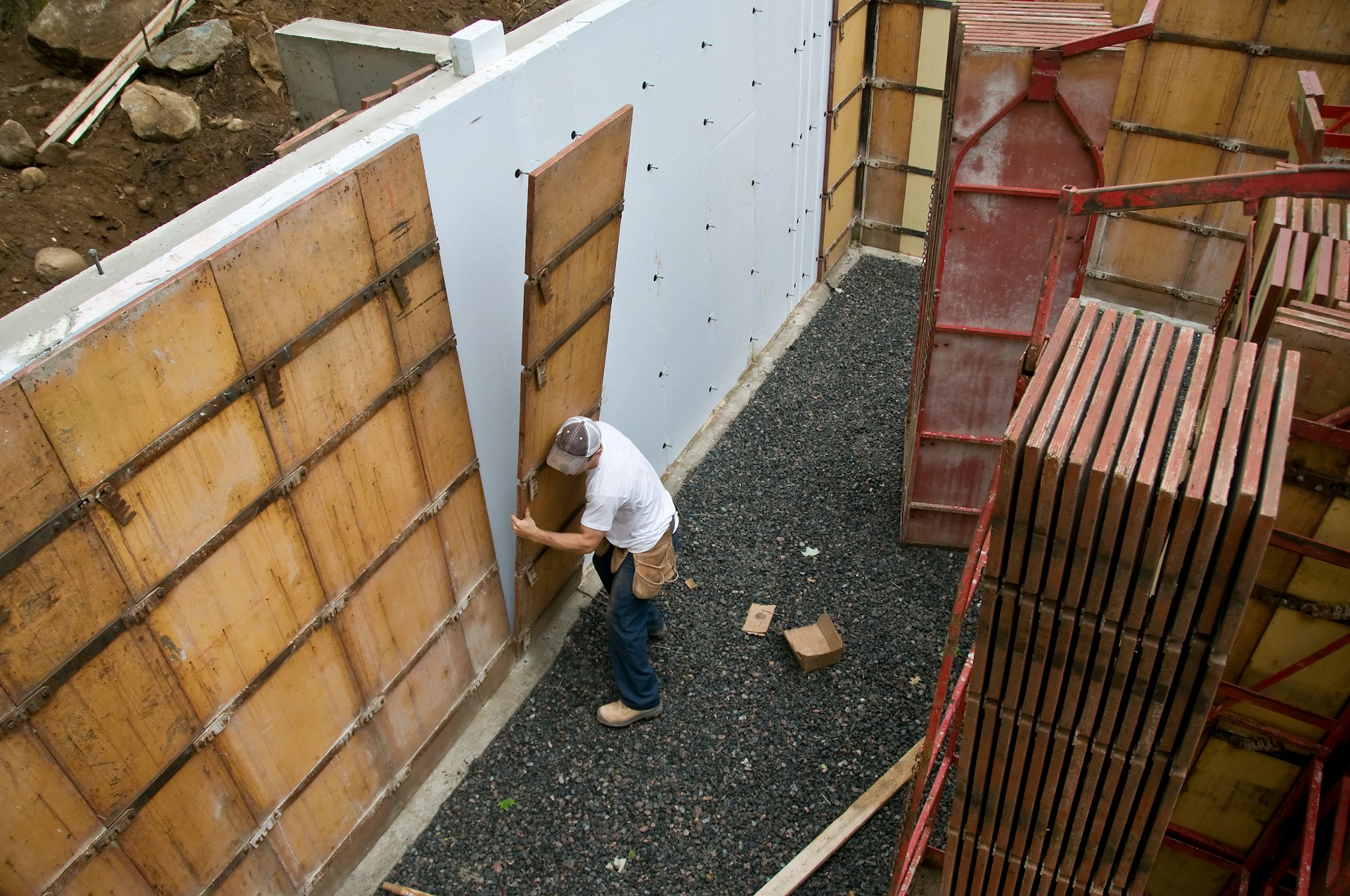Foundation walls do a lot more than hold up your home. They help keep everything stable, secure, and aligned. When those walls start to show signs of damage, it can throw off more than just appearances. Small problems that go unnoticed for too long can lead to larger issues that are harder and costlier to fix. Paying attention to what your foundation is trying to tell you early on can save your home a lot of stress later.
Most of the time, foundation damage doesn’t happen overnight. It builds over time, starting with early warning signs like small cracks or sticky windows. These issues might not seem like a big deal at first, but they often point to something changing below the surface. Knowing what to look for helps you step in before the damage gets worse, and that’s where crack foundation repair comes in. Whether you’re a homeowner or managing a property, knowing these signs helps you stay one step ahead.
Common Early Warning Signs
One of the first things most people notice is a crack on the inside or outside of the foundation wall. Not all cracks are serious, but some can be red flags. Understanding what those cracks mean helps you make smarter choices about what comes next.
Here are some of the most common early signs to watch for:
– Thin vertical cracks: These usually come from natural settling. If they’re under a quarter-inch wide and don’t grow over time, they may not be urgent. Still, it’s a good idea to track them.
– Stair-step or diagonal cracks: These often form in concrete block or brick walls. They could point to soil shifting underneath the foundation or a change in pressure. These cracks usually require closer attention.
– Horizontal cracks: These are more serious and usually mean pressure is pushing against the wall from outside, like from excess water or weak soil.
– Bulging or bowed walls: Even if cracks aren’t obvious, you might see a wall curving inward. That means pressure is pushing it out of line. This is something that doesn’t go away on its own.
– Sticky windows and doors: When frames become hard to open, it may be due to uneven settling in the foundation. That warping can shift other parts of your home out of place.
– Cracked drywall or gaps between the floor and baseboards: These show up inside the house when something below the surface shifts.
Keep an eye out for these signs, especially if they appear together or start getting worse. A single tiny crack may not be a problem, but if it starts getting longer or wider, that’s your home warning you that trouble may be on the way.
Causes Of Foundation Wall Damage
Foundation damage usually starts from outside pressures or environmental changes, not something going on inside the house. Understanding what causes those walls to shift, crack, or bow can help you respond faster and smarter when problems show up.
Soil movement is one of the biggest factors. When the ground around your home expands and contracts from moisture changes, it can put a lot of stress on the foundation. Wet soil swells, dry soil shrinks, and all that movement creates pushing and pulling forces that your walls have to absorb.
In areas with heavy spring or fall rain, poor drainage makes things worse. Water that hangs around too long starts pressing in on basement walls or soaks into the soil and shifts the ground even more. When that water freezes in colder months, it expands again, adding more pressure. The freeze-thaw pattern seen in many parts of the Midwest makes this kind of issue more common.
Poor construction methods can also lead to damage over time. If a foundation wasn’t built with strong materials or lacked proper reinforcement, it may not hold up well. Contractors who cut corners or rush the job often leave behind weaknesses that show up years later in the form of cracks or shifting walls.
Another factor is Mother Nature. Tree roots growing near the foundation can change the soil structure. Trees soak up moisture, drying out the soil and possibly disturbing the balance beneath the foundation. Heavy storms can also wash soil away, leaving unsupported areas that sink or tilt. These small changes beneath the surface create the early cracks that grow wider if ignored.
Inspection Tips For Homeowners
Spotting problems early can save you from major repairs later. You don’t need to be a builder or an engineer to notice the signs. A few minutes of observation every season can help keep things in check. This is especially important after times of rapid weather changes or heavy rainfall.
Use this checklist during your regular inspections:
– Walk around the outside of your home and check for new or lengthening cracks in the foundation.
– Look inside your basement for water marks, bowing walls, or unusual smells that could signal moisture problems.
– Check around windows and doors for drywall cracks running diagonally or outward from corners.
– Test doors and windows to see if they stick, wobble, or don’t align like they used to.
– Put a ball on the floor and see if it stays put. Even subtle slopes can signal a bigger issue.
– Look where walls and floors meet. Gaps or separations might mean the house is shifting.
– Note if water is pooling near the house after rainstorms. This can stress your foundation over time.
Even one or two issues on the checklist might not mean disaster, but they’re worth tracking over time. Take pictures and keep a log. That way, if anything changes, you’ll have a record. When you’re unsure, bringing in a professional can provide a clearer answer. A trained technician can spot structural threats most homeowners might miss entirely.
Benefits Of Hiring Professional Repair Services
Foundation damage isn’t something that fixes itself. And while it may be tempting to patch a crack or ignore a bowed wall, those problems usually grow with time. That’s where professionals come in.
Here’s how hiring experienced repair crews can help:
1. They can identify what type of damage you’re dealing with and whether it’s surface-level or something more serious.
2. They have the right diagnostic tools to catch foundation issues that aren’t easy to see during a walk-through.
3. They can provide a clear repair strategy that addresses the cause of the damage, not just the symptoms.
4. They use proven repair methods that hold up season after season.
5. They help protect your home’s structure and safety for the long haul.
For property owners dealing with larger buildings, especially in commercial spaces, early intervention has even greater value. Delays can impact business operations or damage tenant spaces, leading to costs beyond just repairs. On the flip side, addressing concerns with smart, thorough repairs improves value and confidence in the property.
For homeowners, fixing that small crack or sticking window sooner can stop water from getting into the basement or floors from starting to dip. These are the repairs that don’t grab much attention early on, but later come back with higher price tags if left alone.
Protect Your Home with Preventative Measures
Foundation problems often start small. Paying attention and staying on top of changes can save you time, money, and peace of mind. A strong foundation leads to a stronger, safer home, and that requires regular checks and quick action when something seems off.
You don’t need to overhaul your entire property, but you do need to be aware. Walk your home inside and out every few months. During times of heavy rain or after a hard freeze, check again. Write things down. Over time, you’ll build up knowledge of what’s normal and what might need expert help.
If you catch a foundation wall issue early, fixing it is simpler and less expensive. Frequent small inspections supported by experienced crack foundation repair when needed go a long way in keeping your space secure.
So the next time you notice a sticking window or spot a hairline crack, don’t brush it off. Those signs might be the first clue that your foundation could use some attention before problems grow. Your home’s safety and structure are worth the second look.
If you’ve noticed signs of foundation wall issues around your home, it’s time to get ahead of the problem. Addressing minor issues now can prevent bigger headaches down the line. For experienced help in diagnosing and fixing those pesky cracks, learn more about our crack foundation repair service. King Waterproofing & Foundation Solutions is here to ensure your foundation remains solid, protecting your home for years to come.


